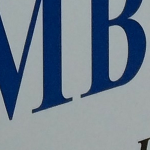Oregon | President Baird Joins OHA COVID-19 Vaccine Advisory Committee
From the Oregon Department of Human Services on December 31
OHA completes recruitment for COVID-19 Vaccine Advisory Committee
27-member group to create sequencing for COVID-19 immunizations
PORTLAND, Ore. — Oregon Health Authority has completed recruitment for its Vaccine Advisory Committee (VAC) that will determine the sequence in which new COVID-19 vaccines are distributed around the state.
The 27-member committee will advise OHA on vaccine sequencing for phases 1b, 1c and 2 of the state’s vaccine distribution plan, with the goal of prioritizing communities most affected by COVID-19. The COVID-19 Vaccine Advisory Committee will be grounded in OHA’s definition of health equity, which—as cited in this excerpt—is a health system where “all people can reach their full health potential and well-being and are not disadvantaged by their race, ethnicity, language, disability, gender, gender identity, sexual orientation, social class, intersections among these communities or identities, or other socially determined circumstances.”
To advance health equity, and counter unjust COVID-19 inequities, the COVID-19 VAC will:
- Advise OHA on the ethical principles that should guide decisions on sequencing of COVID-19 vaccines.
- Review data on COVID-19 and immunization inequities.
- Advise OHA on which workers, high-risk groups or critical populations should be sequenced at what time, taking into consideration where they are located across the state.
The committee roster is as follows:
|
Aileen Duldulao |
Oregon Pacific Islander Coalition |
|
Cherity Bloom-Miller |
Siletz Community Health Clinic |
|
Christine Sanders |
Rockwood Community Development Corp. |
|
Daysi Bedolla Sotelo |
Pineros y Campesinos Unidos del Noroeste |
|
DeLeesa Meashintubby |
Volunteers in Medicine |
|
Debra Whitefoot |
Nch’i Wana Housing |
|
Derick Du Vivier |
Oregon Health & Science University |
|
Dolores Martinez |
Euvalcree |
|
George Conway |
Deschutes County Health Services |
|
Kalani Raphael |
Oregon Pacific Islander Coalition |
|
Kelly Gonzales |
Portland State University |
|
Kristin Milligan |
Community Volunteer Network |
|
Laurie Skokan |
Providence Health & Services |
|
Leslie Sutton |
Oregon Council on Developmental Disabilities |
|
Maleka Taylor |
The Miracles Club |
|
Maria Loredo |
Virginia Garcia Memorial Health Center |
|
Marin Arreola |
Interface Network |
|
Muriel DeLaVergne-Brown |
Crook County Health Department |
|
Musse Olol |
Somali American Council of Oregon |
|
Nannette Carter-Jafri |
SEIU Local 503 Indigenous People’s Caucus |
|
Ruth Gulyas |
LeadingAge Oregon |
|
Safina Koreishi |
Columbia Pacific CCO |
|
Sandra McDonough |
Oregon Business & Industry |
|
Shawn Baird |
Metro West Ambulance Service |
|
Sue Steward |
Northwest Portland Area Indian Health Board |
|
Tsering Sherpa |
The Rosewood Initiative |
|
Zhenya Abbruzzese |
Adventist Health |
“The COVID-19 Vaccine Advisory Committee brings tremendous lived and professional experience to guide OHA’s decisions about vaccine sequencing in a way that upholds OHA’s goal to eliminate health inequities by 2030,” said Cara Biddlecom, OHA deputy public health director.
“Members of this committee represent communities that have been unjustly impacted by COVID-19, including tribal communities and communities of color, and OHA is committed to involving community members in the decision-making processes that affect their lives.”
The committee’s first public meeting is Thursday, Jan. 7, from 9 a.m. to noon. The meeting can be accessed via conference line at 669-254-5252; meeting ID: 160 583 9896.
For more information about the committee, visit the Vaccine Advisory Committee information page. Comments or questions can be emailed to covid.vaccineadvisory@dhsoha.state.or.us.
Stay informed about COVID-19:
Oregon response: The Oregon Health Authority leads the state response.
United States response: The Centers for Disease Control and Prevention leads the US response.
Global response: The World Health Organization guides the global response.



